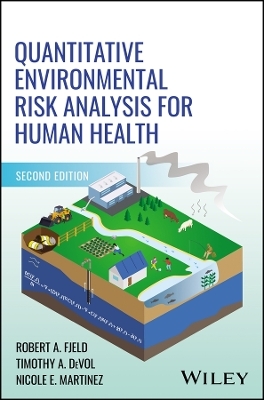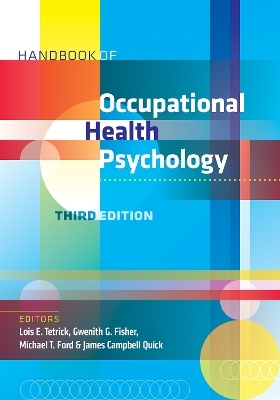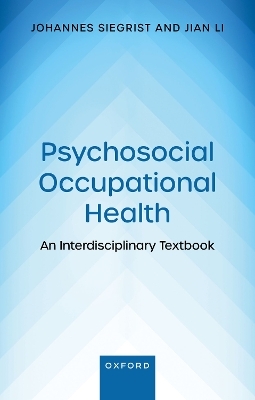
Environmental Stressors and OxInflammatory Tissues Responses
CRC Press (Verlag)
978-1-032-35700-3 (ISBN)
Environmental risk factors – noise, air pollution, chemical agents, and ultraviolet radiation – impact human health by contributing to the onset and progression of noncommunicable diseases. Accordingly, there is need for preclinical and clinical studies and comprehensive summary of major findings. This book is a state-of-the-art summary of these myriad severe life stressors. The chapters on the different pollutants focus on disease mechanisms (cardiovascular, neurological and metabolic disorders) and on oxidative stress and inflammation. The editors emphasize emerging mechanisms based on dysregulation of the circadian clock, the microbiome, epigenetic pathways, and cognitive function by environmental stressors, and introduce the exposome concept while highlighting existing research gaps.
Key Features:
Links various environmental stressors to the incidence of noncommunicable diseases
Includes chapters on airborne toxins, chemical pollutants, noise, and ultraviolet radiation stressors
Contributions from an international team of leading researchers
Summarizes the impacts of stressors on disease mechanisms
Giuseppe Valacchi, PhD, is David H. Murdock Distinguished Professor and Professor of Regenerative Medicine at the North Carolina State University. In addition, he is Professor of Physiology at the University of Ferrara, Adjunct Professor at Kyung Hee University, Seoul, South Korea and President Elect for the SFRR-Europe. He earned his PhD in Cellular Physiology and Neuro-Immunophysiology from the University of Siena, Italy, followed by postdoctoral training at the Department of Molecular and Cell Biology, University of California-Berkeley and at the Pulmonary Division, University of California-Davis, and as Senior Researcher in the Department of Nutrition, University of California-Davis. Dr. Valacchi’s research focuses on the effect of pollution (ozone, ultraviolet radiation, particulate matter and cigarette smoke) on target organs with emphasis on skin and also lung and gastrointestinal tract. His research significantly contributed to the mechanism and the possible protection of skin towards ozone exposure and more in general to the OxInflammatory responses, including NLRP1 and NLRP3 inflammasome activation, induced by pollution exposure. Andreas Daiber, PhD, earned his PhD in Biological Chemistry from the University of Konstanz and completed his postdoctoral training at the University of Konstanz and Experimental Cardiology, University Hospital Hamburg-Eppendorf and University Medical Center, Mainz, Germany, where he now is Professor and Head of Molecular Cardiology. In 2011 he was appointed a guest professorship at University of Grenoble, France, where he worked on protein nitration and redox-activation of sources of oxidative stress (crosstalk of NADPH oxidases and mitochondria) with Professor Schlattner. From 2014-2016, he was the chair of the European COST Action EU-ROS, a network of excellence with more than 230 participating scientists, dedicated to the mechanistic understanding and therapeutic exploitation of redox biological pathways and antioxidant pharmacological approaches. Dr. Daiber has a longtime research interest in oxidative stress-related cardiovascular disease and redox-regulation of vascular function. More recently, he investigates the effects of environmental stressors such as traffic noise and particulate matter on cardiovascular and metabolic function in humans and model organisms and has identified oxidative stress and inflammation as central players in mediating vascular dysfunction as well as (non-)pharmacological mitigation strategies related to antioxidant response such as NRF2 activation, exercise and fasting.
ch. 1 Man-made environment or living in the Anthropocene – a major health risk factor in the 21st century ch. 2 The exposome concept – description of life-long environmental exposure effects on metabolism, health and disease ch. 3 Problems related to the use of biomarkers of oxidative stress in disease ch. 4 Formation, interconversion, and buffering of reactive oxygen species from gaseous and particulate air pollutants in epithelial lining fluid ch. 5 Chemical modification of proteins by reactive oxygen and nitrogen species under atmospheric and physiological conditions ch. 6 Air pollution and neuropsychiatric disease ch. 7 Underlying mechanisms of the effects of particulate matter in primary and distant organs ch. 8 The ocular surface as a target of air pollution ch. 9 Environmental heavy metals, oxidative stress and disease potential – NRF2 centered genetic and epigenetic mechanisms ch. 10 Insights into the non-coding-RNA regulation of environmental stress-induced disease ch. 11 Oxidative and inflammatory potential of nano/microplastics in living organisms ch. 12 Micro- and nanoplastics contamination: an emerging environmental issue for skin health ch. 13 Waterpipe smoking and e-cigarettes: a safer alternative to combustible cigarettes? ch. 14 The aryl hydrocarbon receptor as an environmental sensor and mediator of stress and inflammation ch. 15 Oxidative stress and inflammation contribute to traffic noise-induced vascular and cerebral dysfunction via uncoupling of nitric oxide synthases ch. 16 Noise pollution and neuropsychiatric disease ch. 17 Imaging of metabolic activity adaptations to UV stress and differentiation at cellular resolution in skin and skin equivalents – Implications for oxidative UV damage ch. 18 Adverse health effects of UVR on skin and other organs ch. 19 Electromagnetic fields redox signaling modulation in brain ch. 20 How adverse childhood experiences increase inflammation and oxidative stress ch. 21 The role of oxidative stress in cardiovascular disease caused by social isolation and loneliness
| Erscheinungsdatum | 19.12.2023 |
|---|---|
| Reihe/Serie | Oxidative Stress and Disease |
| Zusatzinfo | 5 Tables, black and white; 5 Line drawings, color; 12 Line drawings, black and white; 6 Halftones, color; 38 Halftones, black and white; 11 Illustrations, color; 50 Illustrations, black and white |
| Verlagsort | London |
| Sprache | englisch |
| Maße | 178 x 254 mm |
| Gewicht | 1800 g |
| Themenwelt | Medizin / Pharmazie ► Allgemeines / Lexika |
| Medizin / Pharmazie ► Medizinische Fachgebiete ► Arbeits- / Sozial- / Umweltmedizin | |
| Studium ► Querschnittsbereiche ► Klinische Umweltmedizin | |
| Naturwissenschaften ► Biologie | |
| Naturwissenschaften ► Chemie | |
| ISBN-10 | 1-032-35700-2 / 1032357002 |
| ISBN-13 | 978-1-032-35700-3 / 9781032357003 |
| Zustand | Neuware |
| Haben Sie eine Frage zum Produkt? |
aus dem Bereich


